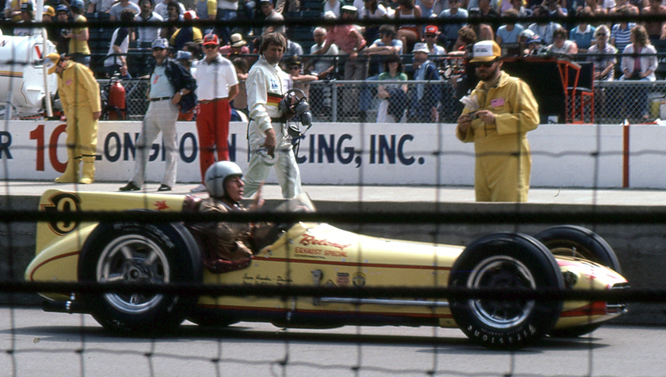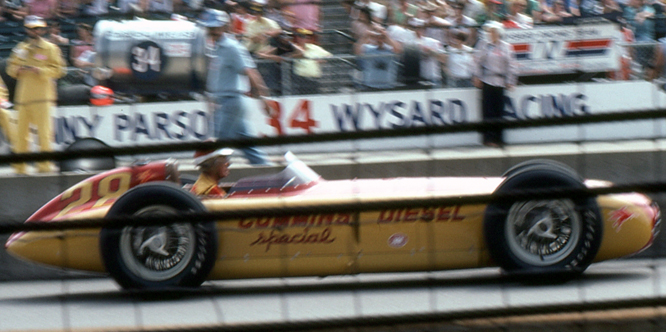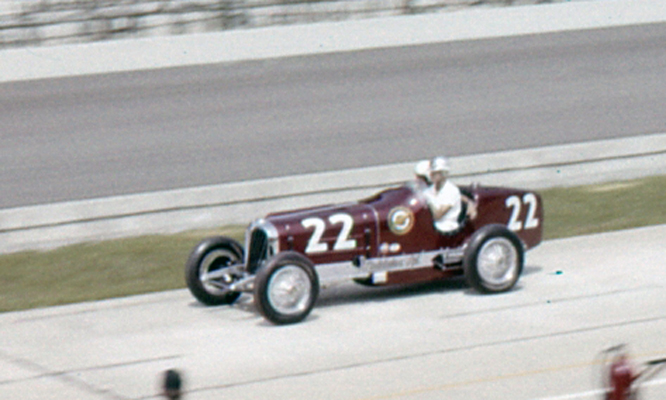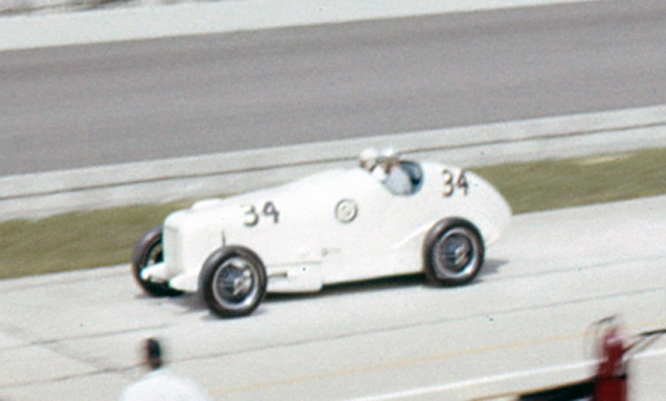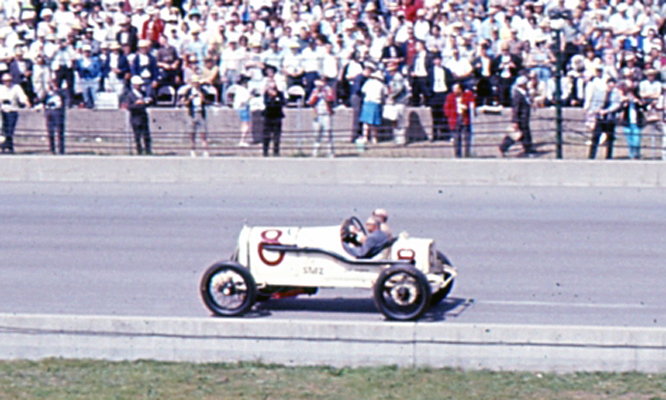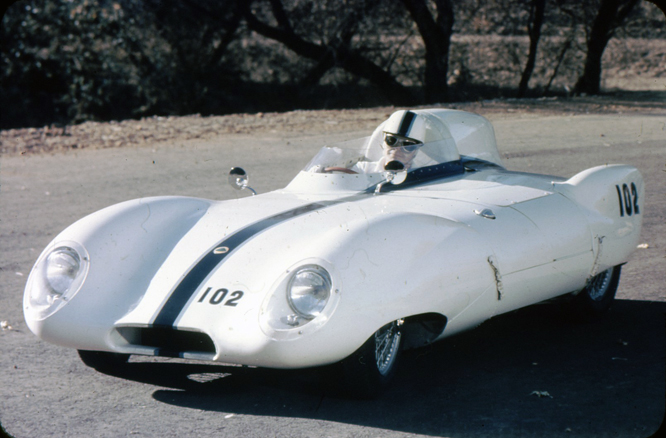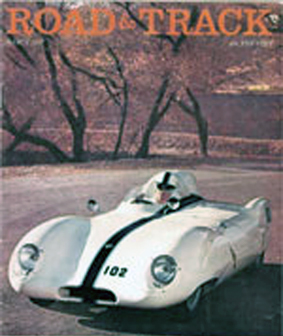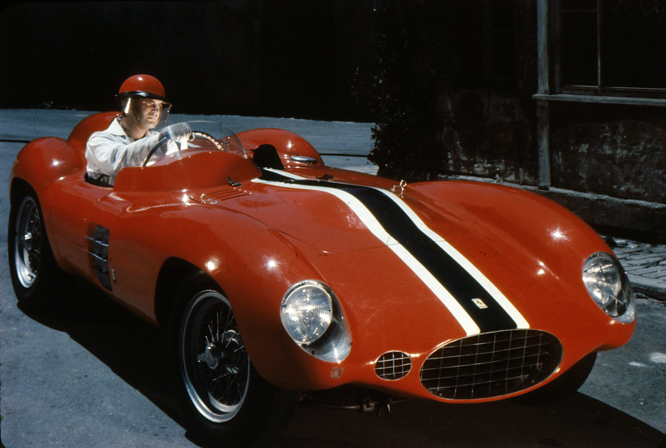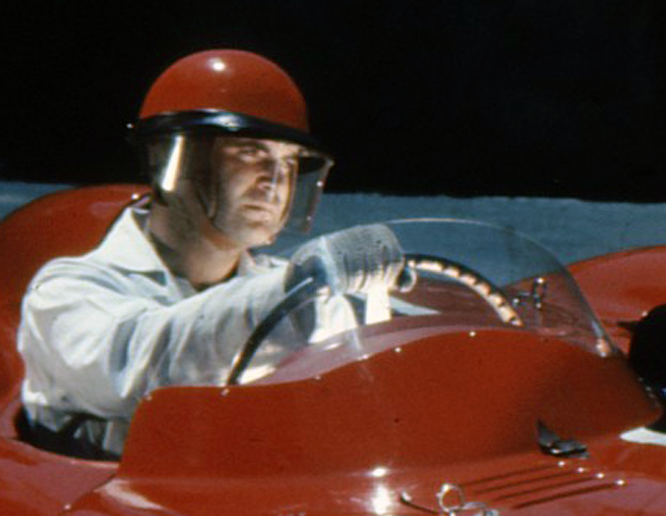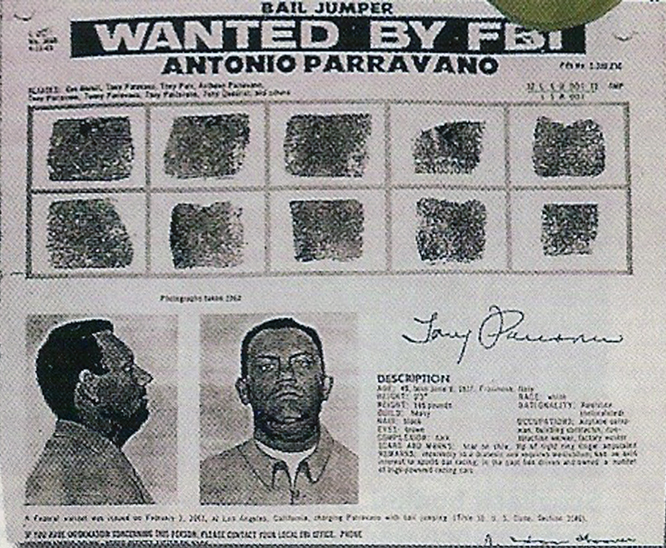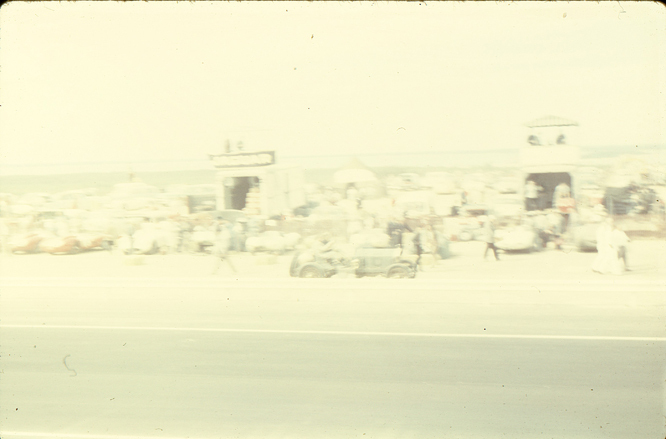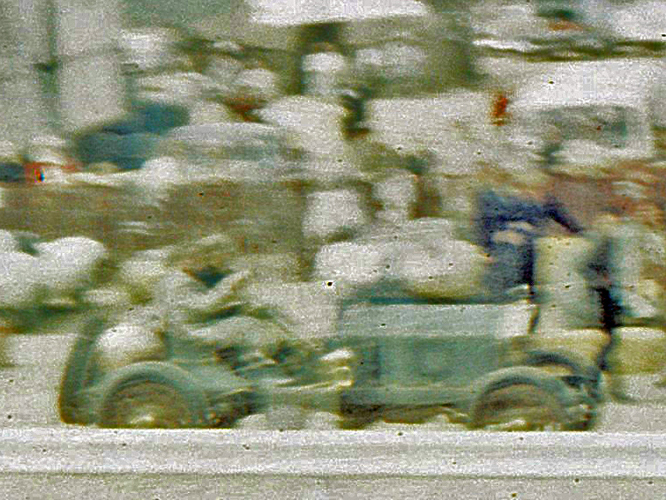Today’s photograph by Ed Arnaudin of the two time winning Belond Exhaust Special, seen here with Sam Hanks at the wheel, was taken in 1982.
The success of the Belond Exhaust Special is a testament to three men who persevered, (Gordon) Howard Gilbert a 1949 Indy 500 winning mechanic with the Blue Crown Spark Plug Special team, Howard’s neighbour George Salih a foreman at Meyer & Drake which produced the prevalent 16 valve twin cam 4 cylinder Offenhauser ‘Offy’ engine and Sam Hanks a driver who after 12 races at the Brickyard had yet to win his first Indy 500.
Salih and Gilbert came up with the brilliant idea of replicating the best features of the 1952 Pole Winning Cummins Diesel Special but without the bulk of the 3,100 lbs diesel powered vehicle.
In 1952 Frank Curtis built two cars with the engines inclined the Cummins Diesel with its engine inclined 5 degrees off horizontal and The Fuel Injector Special belonging to Howard Keck with the engine inclined 36 degrees.
Gilbert and Salih decided to build their car with a compromise between the two ’52 Kurtis Kraft chassis with the engine inclined at 18 degrees off horizontal which decreased the frontal area and lowered the centre of gravity of their car without inducing the lubrication problems that would accrue by inclining the engine at 5 degrees from horizontal, the Cummins diesel was not capable of the high crankshaft revolutions of the gas powered Offenhauser and so was easier to keep lubricated at 5 degrees from horizontal.
In order to build their engine Salih obtained cosmetically flawed Offenhauser parts on credit, and both took out mortgages on their homes to build the chassis, an operation that took place during nights and weekends between day jobs.
Having completed their chassis Quin Epperly built the bodywork in exchange for part ownership, the car is officially known as an Epperly. Exhaust manufacturer Belond got the naming rights for $2500 in sponsorship.
A contingency fund was secured for the #9 Belond Exhaust Special by equipping it with British Blue Lodge Spark Plugs as against the Champion items used by everyone else taking part in the 1957 Indy 500.
Salih got 1953 AAA Champ and 12 time Indy 500 veteran, Sam Hanks, with whom he had worked in 1956, to drive what at the time was the lowest and smallest vehicle of it’s type to a debut victory, at a record speed of 135 mph, whereupon Hanks immediately announced his retirement from racing.
The Belond Special became the first car to head to victory lane twice with different drivers in 1958 when 3 time champ Jimmy Bryan repeated Hanks achievement. In 1959 Bryan retired the Belond Special with a broken engine after just one lap.
Gilbert and Salih continued building cars until 1967, Jimmy Bryan died soon after the linked photo was taken as a result of injuries sustained in an accident at Langhorne in 1960.
Howard Gilbert built further vehicles until 1970 scoring a shock win with George Follmer at the wheel of a stock block Chevy powered Cheetah at Phoenix, in the Jimmy Bryan 150.
From 1970 to 1990 Howard built engines for AJ Foyt which took 25 champ car wins including the 1977 Indy 500, fourth victories at Indy for Gilbert and Foyt, along with USAC championships in 1975 and 1979.
With thanks to Steve Arnaudin for scanning his Dad’s photos to B² and Kevin Triplett for additional information.
Hope you have enjoyed the Belond Exhaust Special edition of ‘Gettin’ a lil’ psycho on tyres’, and that you will join me again tomorrow. Don’t forget to come back now !

